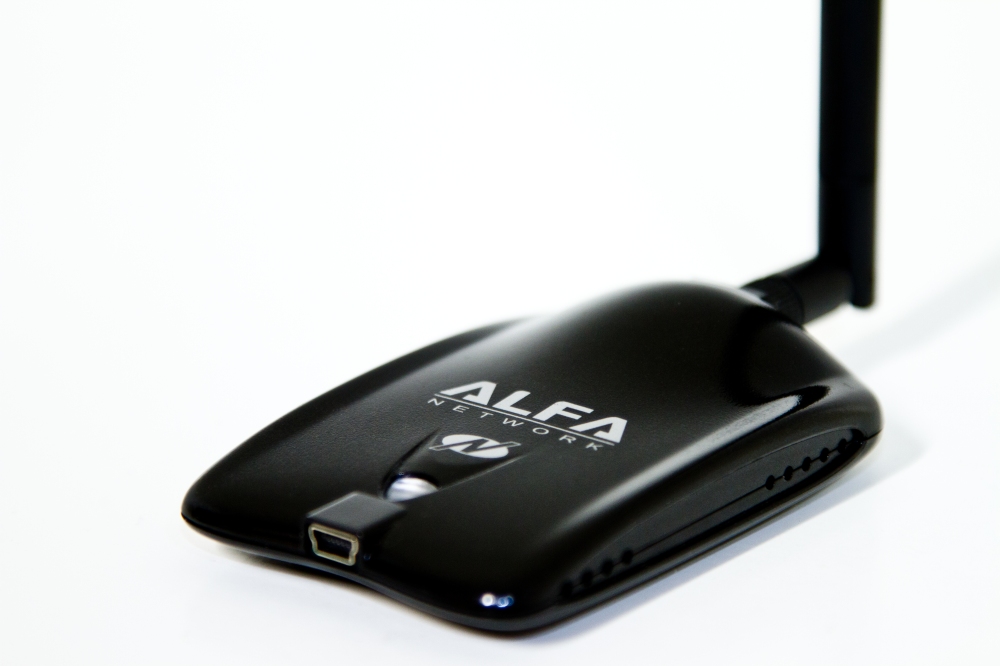If you’re searching for a reliable and affordable USB network adapter to use with your BackTrack 5 virtual machine, you’ve just found it. The Alfa AWUS036NHA is, hands down, the best Linux-compatible network adapter in its class. The Hak5 website asserts that it’s “the obvious choice for WiFi Hackers.” Why? Because, unlike most of its predecessors, the AWUS036NHA supports all six wireless modes.
When measured on a scale of affordability and reliability, one can easily conclude that the Alfa is a cost-effective solution to their networking needs. In fact, I picked one of these bad boys up for under $29 on the Rokland Technologies website- cheaper than the more favorable Amazon. I also grabbed an Alfa 7dBi directional panel antenna, which I wrote about here.
Let’s take a closer look at the Alfa AWUS036NHA.
Product Overview:
- Atheros AR9271 chipset
- 5dBi interchangeable dipole antenna (RP-SMA connection)
- 150Mbps data rate
- 802.11 b/g/n standards
- 2.4GHz frequency range
- 64/128-bit WEP, WPA, WPA2, TKIP, and AES data encryption support
- Windows and Linux Compatibility
Like I pointed out earlier, the Alfa supports six wireless modes. For those of you who don’t know why this is important, allow me to explain a couple of the modes. Let’s start with monitor mode, not to be confused with promiscuous mode. Monitor mode is a mode that allows you to monitor a wireless network’s traffic without associating with the network’s access point. This mode is commonly used to perform packet analysis and network traffic evaluations but is better known for its ability to facilitate packet sniffing.
Next up is master mode. Master mode is a mode that allows you to impersonate an access point and provide network services (i.e. internet access) to clients. In simpler terms, master mode transforms your network adapter into a wireless router. When a potential client searches for available access points, he or she will be confronted with the option to connect to your access point. This is where things get interesting. If a client elects to connect to your access point, he or she immediately becomes susceptible to all kinds of attacks including the infamous man-in-the-middle (MITM) attack. Believe or not, luring a victim is as easy as naming your access point “Starbucks WiFi.” Something to think about the next time you connect to your favorite coffee shop’s WiFi hotspot.
Now that you have a better understanding of the Alfa AWUS036NHA, I’ll leave it to you to decide whether or not it’s the right adapter for you. If you still are not convinced, don’t take my word for it. Check out Amazon.com and read the reviews left by the dozens of satisfied customers. Better yet, compare it to other USB network adapters.

















